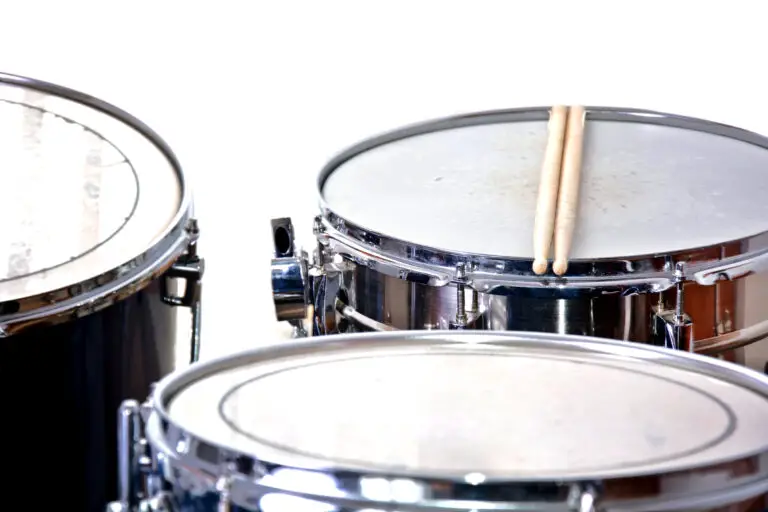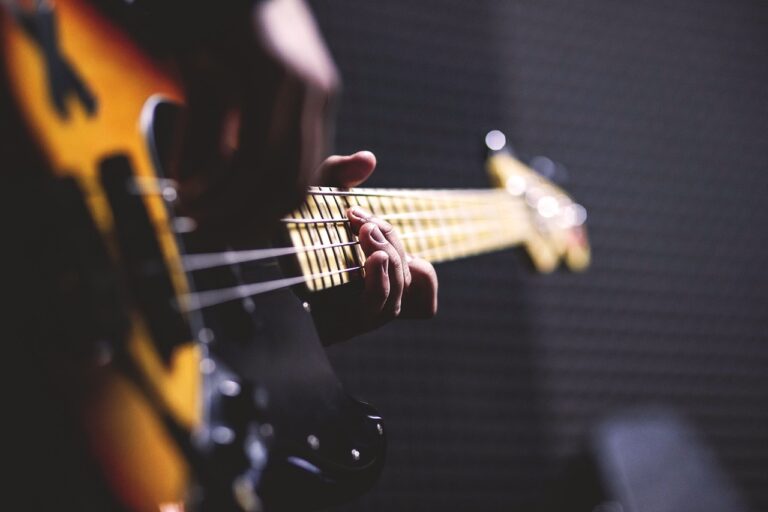Is Ukulele Easier To Play Than Guitar?
When beginners are choosing their first string instrument, the ukulele and guitar are often the top choices.
The ukulele seems simpler, as it has fewer strings and a softer tone. In contrast, the guitar, with its broader range and cultural significance, offers a different kind of allure.
With both options being popular and relatively common among musicians, which one is actually easier to learn and play?
Generally, the ukulele is easier for beginners than the guitar, at least in terms of learning the basics. This is because it has fewer strings, which means fewer notes to learn.
The nylon strings are gentler on the fingers compared to the steel strings of a guitar. This simplicity allows for a quicker learning process, enabling new players to play full songs relatively fast.
The guitar, with its six strings and wider fretboard, requires a bit more initial effort to get comfortable with.
What Are The Main Differences Between Ukulele And Guitar?
Size and Portability
Ukuleles are much smaller and lighter than guitars, making them easy to carry around. You can take a ukulele almost anywhere without much hassle.
Guitars are larger and require a case for transport, which can be bulky and inconvenient if you’re constantly on the move.
Number of Strings
A ukulele has four strings, while a guitar has six. This means you have fewer notes to learn on a ukulele, simplifying the learning process.
With a guitar, those extra strings offer a wider range of notes, but they also mean there’s more to learn.
String Material
Ukulele strings are made of nylon, which is softer and easier on your fingers. Guitar strings are often made of steel. Steel strings tend to feel harder on your fingers and take some getting used to.
Classical guitars also have nylon strings, but the wider neck still makes them a bit more challenging than a ukulele.
Tuning
Ukuleles are tuned to G-C-E-A, which makes for easy chord shapes and a quick start for beginners.
Guitars are tuned to E-A-D-G-B-E. This type of tuning allows for a larger variety of potential chords that you can play. However, it’s also harder to learn compared to the simpler ukulele tuning.
Sound and Range
The ukulele has a soft, mellow sound and a limited range, which is great for simple tunes and vocal accompaniment. The guitar has a broader range. With a longer fretboard, guitars are capable of producing notes that range from deep bass notes to high-pitched ones. This lends itself to different types of playing styles.
Learning Curve
The ukulele’s fewer strings and simple tuning mean you can learn basic songs quickly. The guitar requires more practice to master the basics, but it also offers more room for growth and exploration as you improve.
Musical Styles
Ukuleles fit well with folk, Hawaiian, and pop music.
They’re not commonly used for genres that need a full range of bass and treble. With guitars, you have more genre options available for playing.
Guitars can be used in pretty much every genre, especially popular ones like pop, rock, metal, jazz, and even hip hop.
Price
On average, ukuleles are less expensive than guitars. If you’re on a tight budget, you may want to opt for a ukulele. Guitars can vary widely in price, but they can definitely get pricey.
However, with both instruments, the price often reflects the quality.
Uke Like the Pros: Terry Carter talks about the 5 main differences between guitars & ukuleles:
How To Transition From Guitar To Ukulele
Drawing upon our guitar-playing expertise, we can transition to playing the ukulele with relative ease. There’s a certain edge experienced guitarists have when picking up the ukulele.
The existing familiarity with string instrument chord structures, strumming patterns, and finger placements can greatly assist the transition process.
To fully transition from guitar to Ukulele:
Familiarize Yourself With The Ukulele Layout
Think of the ukulele as the guitar’s laid-back island cousin. It’s smaller, sure, but it packs a punch with its own tuning vibe of G-C-E-A.
That high G string? It’s going to flip your guitar instincts on their head in the best way possible.
Embrace the change; it’s what gives the ukulele its sunny disposition.
Adapt Your Chord Shapes
Your guitar chords just got a tropical twist. Imagine the D chord on your six-string.
On the uke, that shape is now a G chord. It’s like learning a new dialect of the same language.
Dive into these new shapes with gusto—they’re your passport to ukulele territory.
Practice Finger Placement
On the guitar, you might be used to stretching your fingers across a vast fretboard. The ukulele’s more like a cozy nook—everything’s within easy reach.
Start with the basics, one or two fingers at a time, and let your hands get used to the neighborhood.
Learn To Strum For Ukuleles
Ditch the pick and let your fingers do the dancing. The ukulele strings ask for a gentler touch—think feathers, not hammers.
Strumming is an art form here, and your digits are the brush. Explore the canvas of sounds from the soft whisper of a finger-strum to the rhythmic pulse of a palm-mute.
Explore Ukulele-Specific Techniques
Sure, you can bring your guitar skills to the party, but why not learn the hula while you’re here?
The ukulele has its own bag of tricks like the Hawaiian strum or a fingerpicking style that’ll make that high G string sing.
It’s these unique flourishes that’ll give your ukulele playing true authenticity.
Practice Regularly
Just like the guitar, the ukulele is all about that sweet, sweet practice time. Start simple, get those chords and strums down, and then start building your island repertoire. The more you play, the more the ukulele’s charm will rub off on you.
Enjoy The Process!
Above all, let the good times roll. The ukulele is all about joy and ease. If you hit a sour note, laugh it off. If a new strum pattern feels like a puzzle, relish solving it.
This little instrument is about spreading happiness—as much in the playing as in the listening.
Why Learn Ukulele?
The ukulele offers a fresh musical experience that complements your guitar skills neatly. Its beginner-friendly nature lies in its design—fewer strings and softer nylon strings reduce the complexity and physical discomfort beginners often encounter when learning the guitar.
The ukulele’s smaller size and lighter weight enhance its portable nature.
Take it along for a beach jam or a campfire singalong! Ukuleles typically cost less than guitars, making them a more budget-friendly option for beginners testing out their interest in string instruments.
Remember, learning to play ukulele doesn’t negate your guitar skills; it leverages them to expand your musical repertoire and versatility.
What Are The Challenges Of Learning Ukulele?
Finger Placement and Comfort
The cozy fretboard of a ukulele can feel like a tightrope for those with larger hands.
It’s a delicate dance to press down just right, avoiding the dreaded buzz or mute from an adjacent string.
It’s about finding that sweet spot where your fingers can waltz from one chord to another with grace.
Strumming Techniques
Strumming on a ukulele isn’t just about moving your hand up and down.
Oh no, it’s about mastering a rhythm, injecting life into a pattern until it feels like a second heartbeat.
It’s a skill that can be as elusive as a shadow—seemingly simple but complex upon closer inspection.
Chord Transitions
Leaping from one chord to another with the agility of a gymnast is what makes a ukulele player stand out. But getting there?
It’s a mix of twister and sprint training for your fingers, building up that muscle memory until it’s as natural as breathing.
Tuning Stability
Ukuleles have a notorious reputation for slipping out of tune, especially when they’re fresh out of the box.
It’s like they have a mind of their own, playing the tuning tango and testing your patience—and your ear for pitch.
Limited Range
With only four strings, the ukulele’s range can feel like a cozy apartment—charming but limited.
You might find yourself yearning for the spaciousness of a guitar’s mansion when you’re trying to hit those deep, soulful notes.
Reading Ukulele Tablature and Notation
Tablature and musical notation for the ukulele can seem like ancient hieroglyphs to the uninitiated.
It’s a language of dots and lines that you’ll need to decode to unlock the full potential of this little instrument.
Versatility of Genre
The ukulele may be an island folk hero, but what if you want to rock out or swing with jazz?
Adapting this instrument to less traditional genres is like fitting a square peg in a round hole—it’s possible, but it requires some creative thinking.
In the grand scheme of learning the ukulele, these challenges are the common but not total roadblocks. Overcoming challenges are essential to becoming a more well rounded musician. Embrace them, and you’ll find that each hurdle crossed adds a new note to your personal melody.
Conclusion
Delving into the world of string instruments as experienced guitarists, we find both familiarity and fresh nuances that enhance our musical journey. Undoubtedly, both guitars and ukuleles have their unique appeal and utility.
The choice between the two often boils down to the individual’s preferences, conveniences, and ultimate music goals.
So, while the ukulele might be easier to pick up initially, the journey to mastering either instrument requires consistent dedication and practice.
The joy lies in the learning process, experiencing the uniqueness of each instrument, and creating melodious tunes that resonate with our musical sensibilities. Let that be our guiding compass on this exhilarating musical expedition!







